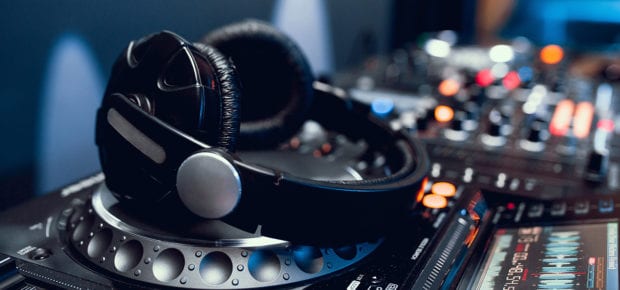February 16, 2016
When we celebrate big-name musicians and their songs, we rarely think of the role technology played in creating a hit. Behind the catchy tunes that flood our phones and other smart devices are centuries of technological advancements.
The History of Recording and Playback of Music
Give thanks to Thomas Edison for being able to listen to that pop song on repeat for hours. He engineered the mechanical phonograph cylinder in 1876, which was the first recording and reproduction machine. From there, the technology grew more sophisticated, and evolved with engineering innovation from the phonograph in 1877, through to the streaming technologies we embrace today.
- 1877- Phonograph – This early recording device used a stylus (hard-pointed instrument like a large needle) on a tinfoil cylinder to record sound
- 1887- Gramophone – A couple tweaks to the phonograph gave life to the gramophone, which amplified musical recordings for entertainment
- 1906 – Victrola – This updated device was a disc player with a horn inside the cabinet instead of outside, and was commercialized for home use
- 1925 – Electrical Recordings – Sound quality was improved by the invention of an electronically amplified, electromagnetic disc cutter, as well as an improved acoustic phonograph on which to play the resulting records
- 1931 – Stereo Sound – Engineers found that two-channel recording, utilizing two microphones, two amplifiers, and two loudspeakers, resulted in a more pleasing sound
- 1943 – Record Players and Vinyl – Innovations in speed of the turntable as well as in material for records created the long-playing, two-sided record that could be used at home to enjoy full albums
- 1966 – 8-Track – This large cassette-type device was created for use in cars, and required minimal effort, with no rewinding, so the driver could concentrate on the road while enjoying music
- 1983 – Cassette Tapes – These plastic devices with tape inside sparked the personal, portable music culture. Cassette tapes allowed for both pre-recorded music, as well as home-recorded sound
- 1984 – CDs – Compact discs were created by using a laser to write the music onto the reflective discs
- 1993 – MP3s – Digital recordings revolutionized the industry, as they were searchable and downloadable to computers and other devices, making it easy to grow a large music collection.
- 2003- iTunes- Apple debuted their online music store with 200,000 downloadable songs available for 99¢ each
- 2005 – Streaming Services – With billions of songs just one click away, streaming services have changed the way we store and listen to music, phasing out the need for many physical household devices
History of Headphone Technology
Recording and data storage tend to monopolize the music conversation as it relates to technology. But what about the history of the amplification of sound? The first headphones were created for use in the military and at switchboards starting in the 1890s, and weren’t embraced by the public for recreation until 1895. The earliest consumer use can be traced back to operagoers using a bulky device to connect into the sounds of the live performance.
The engineering behind the first earphones was an incredible feat for the 1890s. Using telephone receiver technology, miniature receivers were created that weighed less than two ounces. They contained a rubber cover to provide comfort to the wearer.
Around 1910s, the Navy started using an invention closer to the modern design of the headphones we have now. Dynamic headphones were brought to market in 1937, and were improved upon in 1957 when the Koss Corporation created stereophonic headphones for public use.
Headphone usage went truly mainstream with the invention of the Walkman in 1979, which came with portable headphones. Earbuds were created just one year later, and since then have experienced innovation and advances in noise cancellation.
The advances in technology for music recording, playback and headphones have come a long way thanks to engineers who have worked for centuries to improve the way we record and hear music.





 Liquid Infrastructure: Our Planet's Most Precious Resource
Liquid Infrastructure: Our Planet's Most Precious Resource The Impact of Technology in 2025
The Impact of Technology in 2025 Quantum and AI: Safeguards or Threats to Cybersecurity?
Quantum and AI: Safeguards or Threats to Cybersecurity? Why AI Can't Live Without Us
Why AI Can't Live Without Us Bits, Bytes, Buildings and Bridges: Digital-Driven Infrastructure
Bits, Bytes, Buildings and Bridges: Digital-Driven Infrastructure Impact of Technology in 2024
Impact of Technology in 2024 Emerging AI Cybersecurity Challenges and Solutions
Emerging AI Cybersecurity Challenges and Solutions The Skies are Unlimited
The Skies are Unlimited Smart Cities 2030: How Tech is Reshaping Urbanscapes
Smart Cities 2030: How Tech is Reshaping Urbanscapes Impact of Technology 2023
Impact of Technology 2023 Cybersecurity for Life-Changing Innovations
Cybersecurity for Life-Changing Innovations Smarter Wearables Healthier Life
Smarter Wearables Healthier Life Infrastructure In Motion
Infrastructure In Motion The Impact of Tech in 2022 and Beyond
The Impact of Tech in 2022 and Beyond Cybersecurity, Technology and Protecting Our World
Cybersecurity, Technology and Protecting Our World How Technology Helps us Understand Our Health and Wellness
How Technology Helps us Understand Our Health and Wellness The Resilience of Humanity
The Resilience of Humanity Harnessing and Sustaining our Natural Resources
Harnessing and Sustaining our Natural Resources Creating Healthy Spaces Through Technology
Creating Healthy Spaces Through Technology Exceptional Infrastructure Challenges, Technology and Humanity
Exceptional Infrastructure Challenges, Technology and Humanity The Global Impact of IEEE's 802 Standards
The Global Impact of IEEE's 802 Standards Scenes of our Cyber Lives: The Security Threats and Technology Solutions Protecting Us
Scenes of our Cyber Lives: The Security Threats and Technology Solutions Protecting Us How Millennial Parents are Embracing Health and Wellness Technologies for Their Generation Alpha Kids
How Millennial Parents are Embracing Health and Wellness Technologies for Their Generation Alpha Kids Space Exploration, Technology and Our Lives
Space Exploration, Technology and Our Lives Global Innovation and the Environment
Global Innovation and the Environment How Technology, Privacy and Security are Changing Each Other (And Us)
How Technology, Privacy and Security are Changing Each Other (And Us) Find us in booth 31506, LVCC South Hall 3 and experience the Technology Moon Walk
Find us in booth 31506, LVCC South Hall 3 and experience the Technology Moon Walk Virtual and Mixed Reality
Virtual and Mixed Reality How Robots are Improving our Health
How Robots are Improving our Health IEEE Experts and the Robots They are Teaching
IEEE Experts and the Robots They are Teaching See how millennial parents around the world see AI impacting the lives of their tech-infused offspring
See how millennial parents around the world see AI impacting the lives of their tech-infused offspring Take the journey from farm to table and learn how IoT will help us reach the rising demand for food production
Take the journey from farm to table and learn how IoT will help us reach the rising demand for food production Watch technical experts discuss the latest cyber threats
Watch technical experts discuss the latest cyber threats Explore how researchers, teachers, explorers, healthcare and medical professionals use immersive technologies
Explore how researchers, teachers, explorers, healthcare and medical professionals use immersive technologies Follow the timeline to see how Generation AI will be impacted by technology
Follow the timeline to see how Generation AI will be impacted by technology Learn how your IoT data can be used by experiencing a day in a connected life
Learn how your IoT data can be used by experiencing a day in a connected life Listen to technical experts discuss the biggest security threats today
Listen to technical experts discuss the biggest security threats today See how tech has influenced and evolved with the Games
See how tech has influenced and evolved with the Games Enter our virtual home to explore the IoT (Internet of Things) technologies
Enter our virtual home to explore the IoT (Internet of Things) technologies Explore an interactive map showcasing exciting innovations in robotics
Explore an interactive map showcasing exciting innovations in robotics Interactively explore A.I. in recent Hollywood movies
Interactively explore A.I. in recent Hollywood movies Get immersed in technologies that will improve patients' lives
Get immersed in technologies that will improve patients' lives